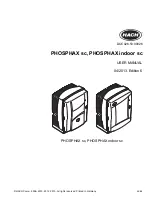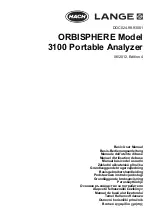
22
Noise generator
3
.-
How to check the headend in an
installation:n:
- Connect the noise generator to the headend
input, keeping in mind that the input level must
not be too high so as not to saturate the headend
elements. Remember that if the -30dB output is
used, you must use a 75 ohm. load in the main
output.
As you can see, the bedroom 2 socket on the
2nd floor is the worst, as it is the one with the
highest attenuation in all frequencies.
- The signal power at the output of the noise
generator should be at least 60 dBµV in order to
compensate for the 22 dB attenuation undergone
in the high frequencies in the installation’s worst
socket.
- As in the previous example, make a note of all the
reference frequencies.
- Next, connect the noise generator to the
distribution network input, as indicated in the
installation picture.
- Measure the selected reference frequencies in
the worst socket or at the place or places where
you want to evaluate the losses. The power
measured should coincide approximately with
the theoretical value that ought to be calculated
as follows:
Power
salida
= Power
enTrada
- Attenuation
It is necessary to take into account that both the
bandwidth and the resolution filter must be the
same when measuring the signal power provided
by the generator, and the powering of the signal in
the sockets (or in any network element where you
wish to carry out a measurement).
- Connect the field meter to the output.
- This way it is possible to check that all the
elements that make up the headend work
correctly, and that the levels of the channels that
form the headend have been equalised correctly.
C55
C58
C61
C65-69
0234796
-30 dB
Level Adj.
0 - 10 dB
5 - 3.000 MHz
ON
Summary of Contents for 593001
Page 40: ...40 ...
Page 41: ...41 ...
Page 42: ...42 ...
Page 43: ...43 ...
Page 44: ...593001_000_ ES EN IT DE ...
















































